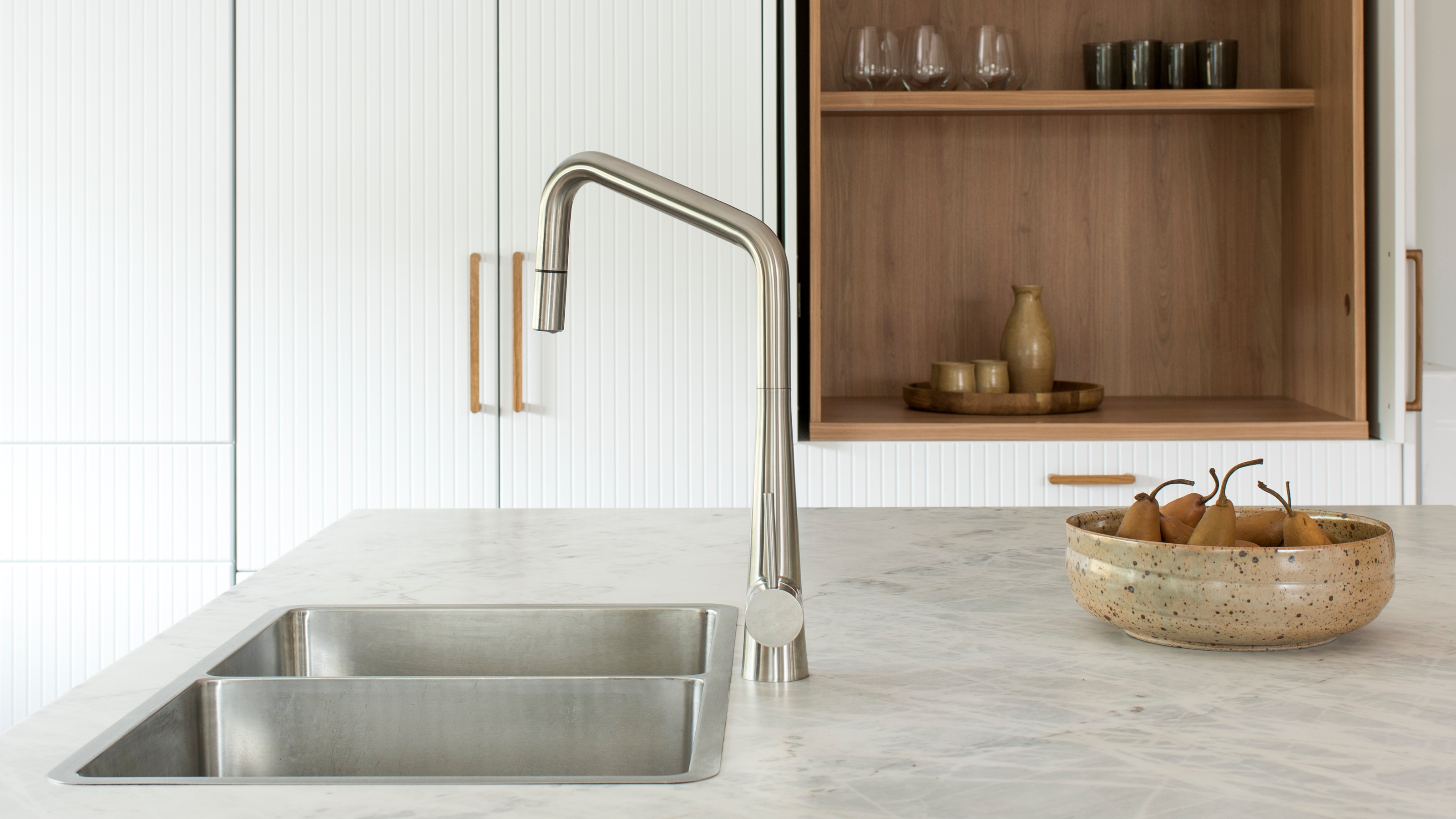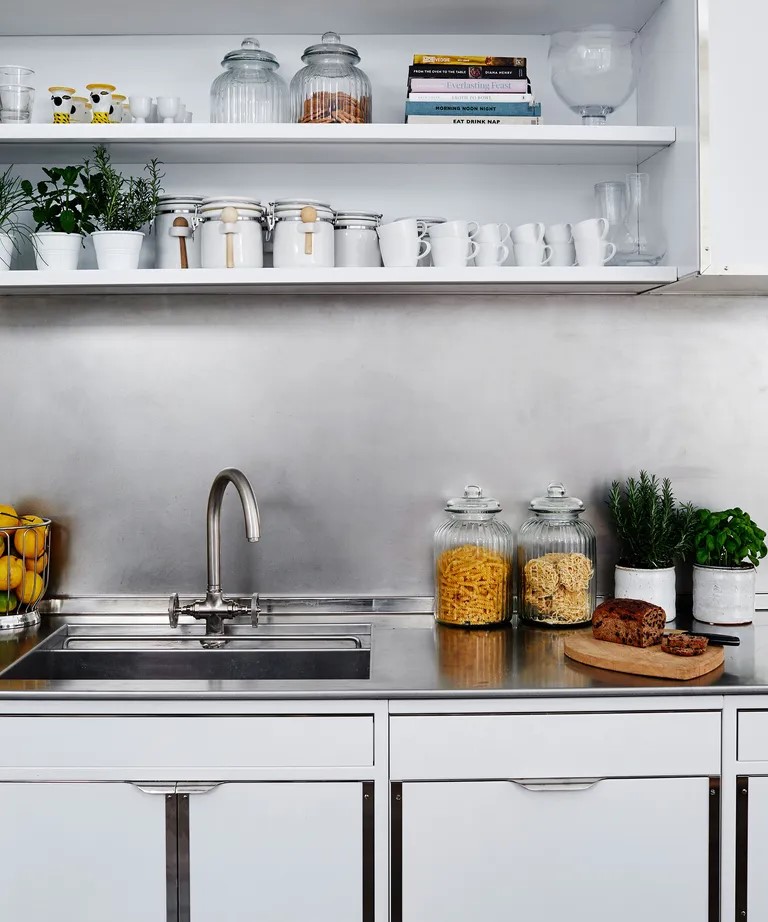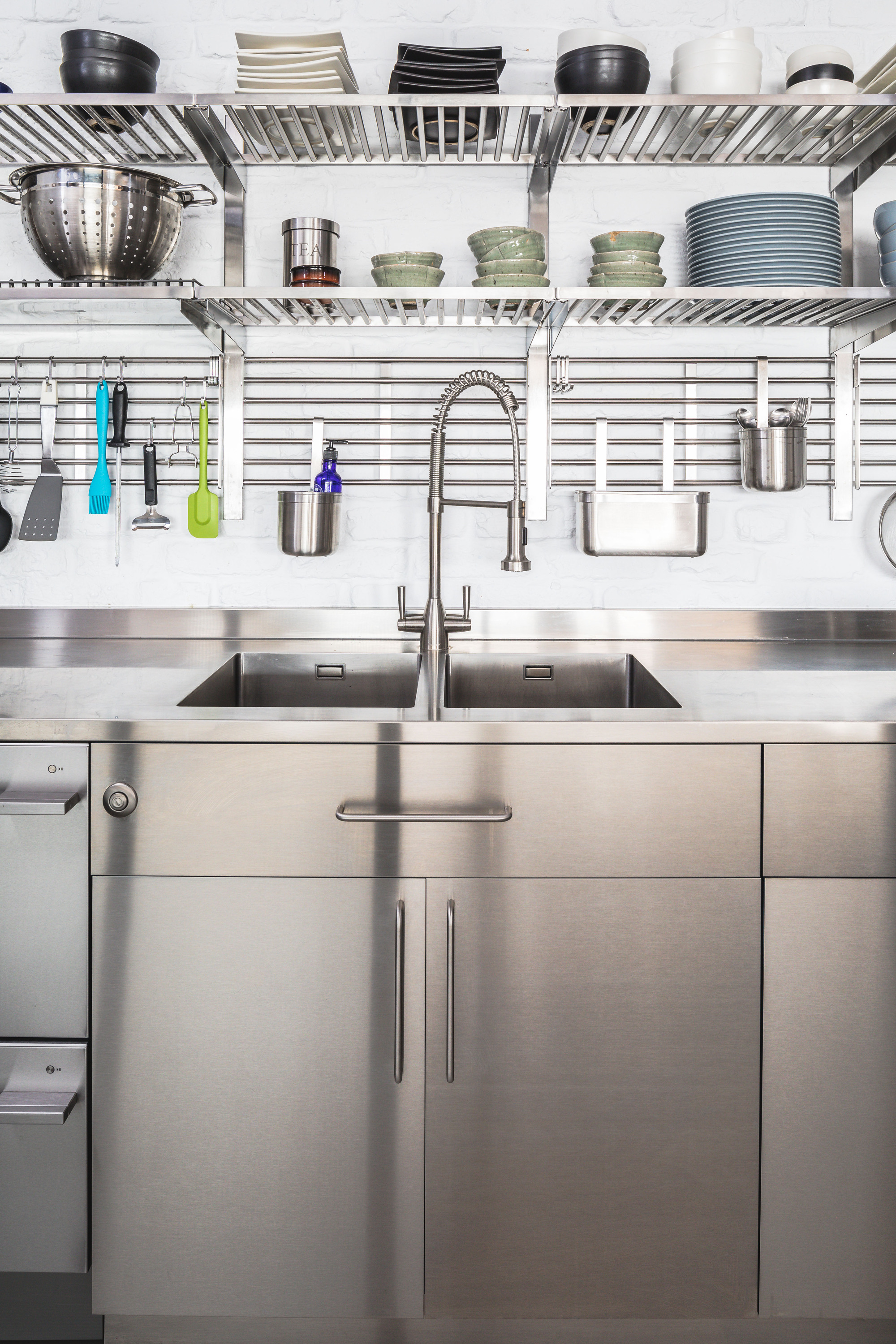Is Your Stainless Steel Sink Due for a Glow Up? Cleaning Experts Share Their Top Tips to Restore Its Sparkle
A professional guide to getting your grimy sink to shine...It only takes a few steps


Stainless steel sinks are no longer the humdrum, run-of-the-mill option for kitchens that we once considered them to be. These days, designers are embracing this durable material in chic new ways, but in order for it to look its best, you'll want your stainless steel sink to be spotless.
You might not give a second thought to how to clean your stainless steel sink. After all, with this hardy material, the clue is in the name. These sinks are resistant to stains and rust, plus they can withstand high temperatures and strong household cleaning products. All that being said, they still need regular cleaning, and believe it or not, there's a right and wrong way to do it.
If you're wondering how to make your stainless steel sink really shine, we have the answers. We've asked a cleaning professional and an expert on metals exactly how you should look after your stainless steel sink for the best results and, a heads up, the answer might surprise you.
What You'll Need

As far as cleaning culinary spaces go, stainless steel kitchens are some of the most straightforward (there's a reason it's the standard choice for restaurants). For day-to-day cleaning of a stainless steel sink, a regular all-purpose cleaner will do just fine, but some cases call for a stronger cleaning formula. Here's what the experts recommend for different scenarios.
For everyday cleaning
• A soft sponge — Stock up on these Scotch-Brite ocelo Multi-Purpose Sponges from Walmart which come in a pack of six.
• A microfiber cloth — These are great for polishing your steel sink. We prefer these microfiber cloths, also Scotch-Brite at Walmart.
• An all-purpose cleaner — This Method All-Purpose Cleaner Spray, available at Amazon cuts through grease and grime without any nasty chemicals.
• Mild dish soap — Dawn EZ-Squeeze Ultra Dish Soap, available from Amazon, is the industry favorite.
For deeper cleaning
• Baking soda — Arm and Hammer baking soda, available at Amazon, is a reliable choice.
• A soft bristle brush — This Soft Bristle Dusting Brush from Amazon has over 1,000 5-star reviews, but an old toothpaste also works just as well.
• A lemon — A fresh lemon is always best, but you can also try lemon juice from concentrate such as ReaLemon, available at Walmart.
How to Clean a Stainless Steel Sink

For the most part, cleaning a stainless steel kitchen sink is a walk in the park. "An everyday clean with soapy water and a sponge will help keep your sink looking fresh, while a deep clean every so often will make sure it stays shining for longer," explains Paul McFadyen, metals expert and Chairman at metals4U.
That said, there's one small detail you need to be aware of when wiping down your sink, and you can find it in the method below.
1. Clear the sink area
We're stating the obvious here, but you can't give your stainless steel sink a thorough clean without removing any dishes or surrounding wash clothes first. If your sink has an integrated draining board, be sure to clear that, too.
2. Rinse the sink and remove any debris
Before you begin the task of cleaning, remove any crumbs or loose food from the sink and plug. "Rinse your sink with warm water to wash any remaining bits down," suggests Kathy Turley of Home Clean Heroes.
3. Identify the direction of your grain
There's one key step remaining before you put on your rubber gloves, and it's likely one that you've been overlooking all this time. "The most important thing to remember when cleaning stainless steel appliances is to always wipe in the direction of the grain," notes Kathy.
Just like wood kitchen countertops, stainless steel has a grain that runs through it (although it's much finer). Failure to wipe in the direction of this grain can lead to scratches and dull the surface of your sink.
"To determine the grain of stainless steel, look closely at the surface for faint lines running along the finish," instructs Kathy. "These lines indicate the direction of the grain, which you should follow when cleaning to avoid streaks and scratches, and maintain a polished appearance."

With over 20 years of experience in the hospitality field, Kathy joined Home Clean Heroes in 2017 as Director of Marketing. A warm and friendly professional with deep knowledge of the practices and cleaning techniques that make Home Clean Heroes successful, Kathy also thrives in driving new customer acquisition and keeping her eye on the customer experience.

4. Wash with soapy water and a sponge
Similar to cleaning stainless steel pans, a gentle solution of warm water and mild dish soap is best for everyday cleaning of your sink. "Apply a small amount to a soft sponge and remember to wipe in the direction of the grain," says Kathy. "Gently scrub the sink and then rinse any soap residue with warm water. Lastly, use a dry microfiber cloth to dry and then polish the sink."
5. For deeper cleaning, use baking soda
Baking soda is Paul's trusted staple when performing deeper cleans of stainless steel sinks. "I advise using baking soda mixed with water to form a paste to remove any heavier dirt or grease, as it is non-toxic and food safe," he says. "It’s best to let this mixture sit for a few minutes before scrubbing the basin gently with a sponge or cloth. This should tackle any grease or stains without scratching the surface of your sink."
For more stuck-on marks, Kathy suggests using a soft bristle brush or an old toothbrush to apply the baking soda. "You can also use vinegar to rinse and 'activate' the baking soda and then wipe clean," she says. "Again, repeat the polishing/drying step with a dry microfiber cloth."
6. For tougher marks or grime, add lemon juice
While stainless steel is one of the best kitchen sink materials for durability, sticky stains or grime will still require powerful cleaning. A great eco-friendly option in these scenarios is lemon juice. "You can use half a lemon to tackle any tougher marks as the acidity should be able to break down any remaining stains," recommends Paul. "Plus, it’s a great way to fight any bacteria, leaving your sink perfectly fresh."

Paul is the chairman of metals4u, a company focusing on the online supply of metals. With decades of experience in metal production, he's an expert in the different types of materials and how to look after them.
FAQs
What should you avoid using on a stainless steel sink?
Stainless steel sinks won't chip or scratch as easily as ceramic or copper sinks, but there are certain products you should avoid using if you want to keep your sink shiny and bright.
"You wouldn't want to use any abrasive tools, such as steel wool or even the more coarse side of a sponge, as that can scratch the finish," says Kathy. "We also recommend you avoid bleach on stainless steel as that can damage the protective layer which may cause pitting."
What is the best thing to clean your stainless steel sink with?
Stainless steel sinks are such an easy-to-clean option because they don't require any technical equipment or products.
"As for all stainless steel appliances, a soft sponge or microfibre cloth is perfect for a gentle but effective clean," says Paul. "You need something non-abrasive, but strong enough to tackle even the toughest stains in your sink."
Unless you have the money and freedom to renovate regularly, kitchen sink trends are hard to keep up with. Fortunately, stainless steel is a timeless option, and it always comes out on top when it comes to durability.
And, being made of such a forgiving material, cleaning your stainless steel sink is far easier than other types of basins. Remember to wipe in line with your sink's natural grain and steer clear of abrasive materials and you'll have a shiny spotless sink that serves you for decades to come.
The Livingetc newsletters are your inside source for what’s shaping interiors now - and what’s next. Discover trend forecasts, smart style ideas, and curated shopping inspiration that brings design to life. Subscribe today and stay ahead of the curve.

Lilith Hudson is a freelance writer and regular contributor to Livingetc. She holds an MA in Magazine Journalism from City, University of London, and has written for various titles including Homes & Gardens, House Beautiful, Advnture, the Saturday Times Magazine, Evening Standard, DJ Mag, Metro, and The Simple Things Magazine.
Prior to going freelance, Lilith was the News and Trends Editor at Livingetc. It was a role that helped her develop a keen eye for spotting all the latest micro-trends, interior hacks, and viral decor must-haves you need in your home. With a constant ear to the ground on the design scene, she's ahead of the curve when it comes to the latest color that's sweeping interiors or the hot new style to decorate our homes.